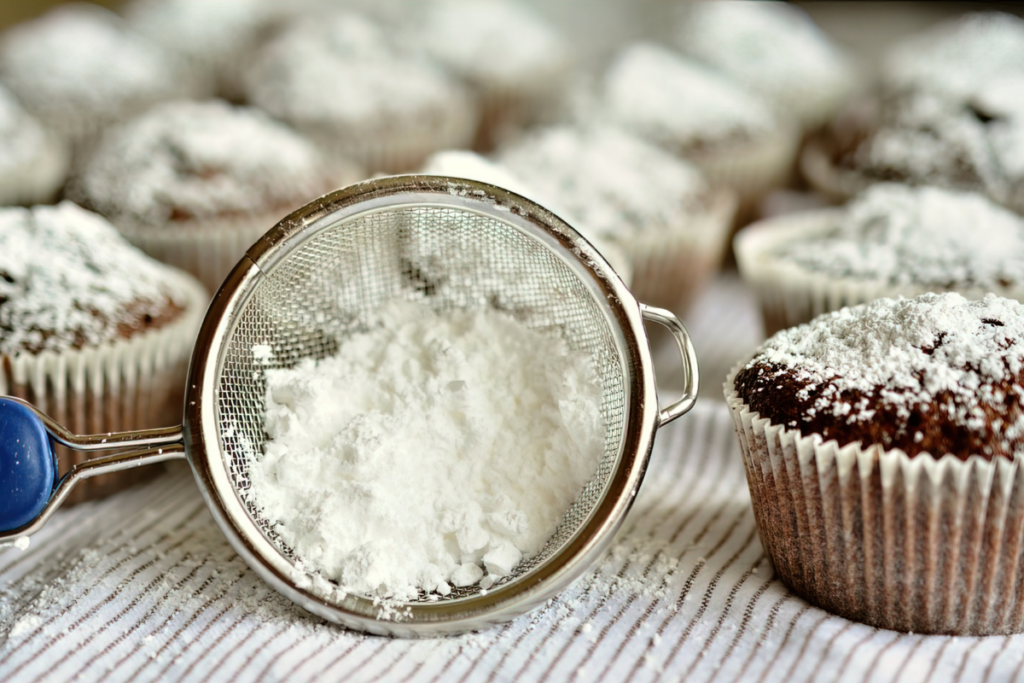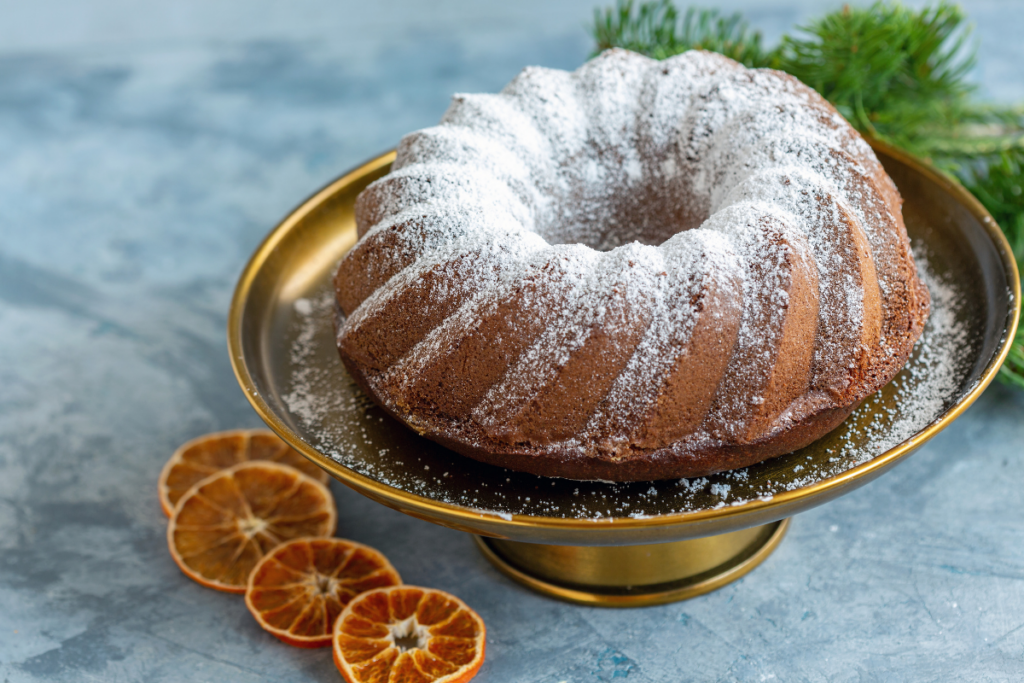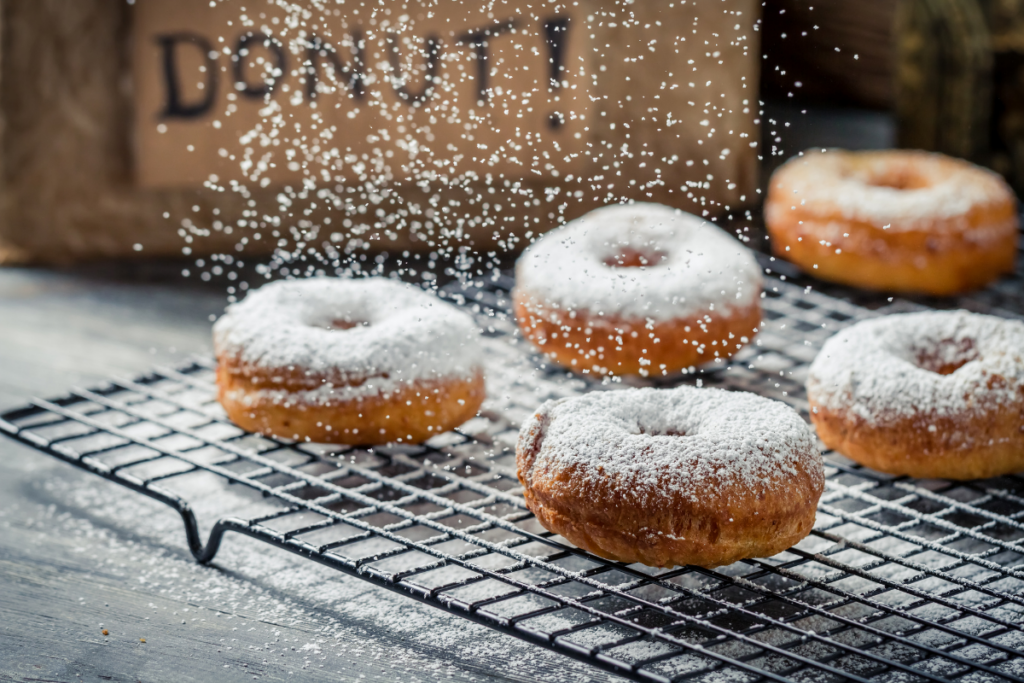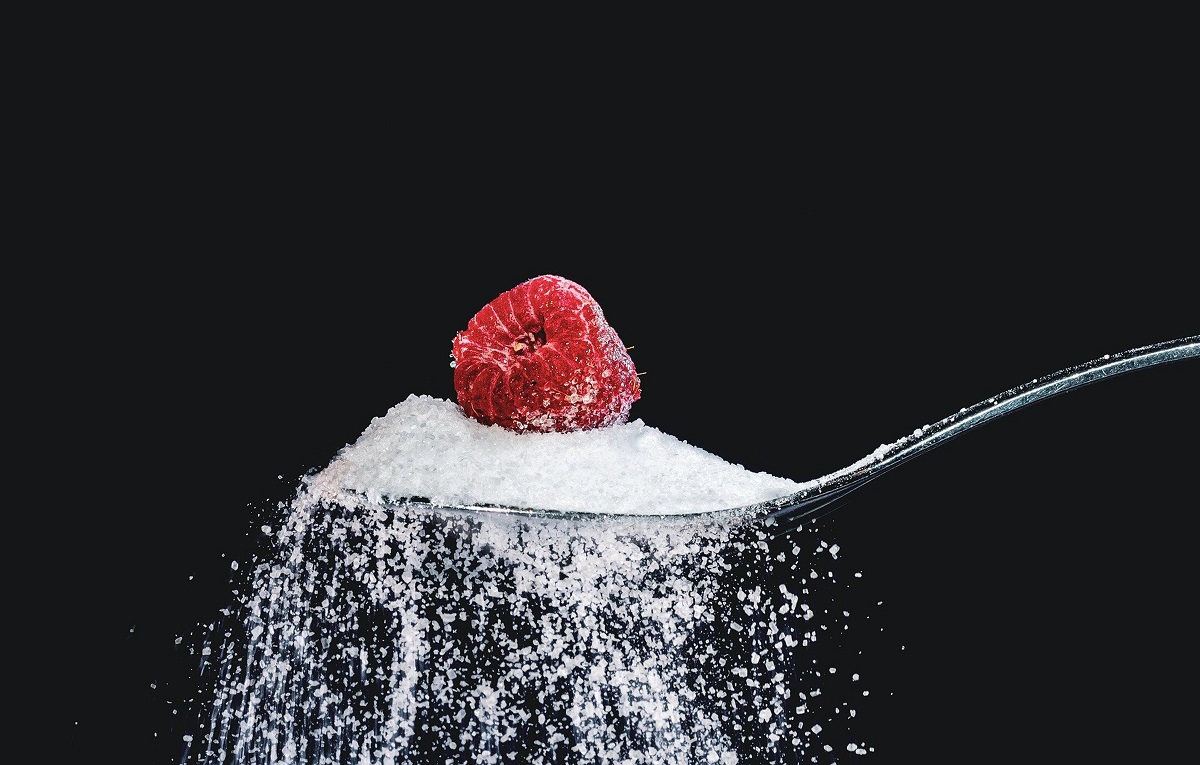Do you ever find yourself in the middle of baking a recipe, only to ask if can you use powdered sugar instead of granulated sugar?
The answer is yes, but it really depends on the recipe and how you plan to use the sugar.
Powdered sugar, also known as confectioner’s sugar, is made by grinding granulated sugar into a fine powder and adding a small amount of cornstarch to prevent clumping.
While it may seem like a simple swap, there are some things to keep in mind.
In some cases, substituting powdered sugar for granulated sugar can affect the texture and overall outcome of your baked goods.
However, in other cases, it can work just fine.
So, let’s dive into the details of when and how to use powdered sugar as a substitute for granulated sugar.

Can You Use Powdered Sugar Instead of Granulated Sugar?
Yes, you can use powdered sugar instead of granulated sugar in some recipes.
However, it’s important to note that powdered sugar is not a direct substitute for granulated sugar in all recipes.
Powdered sugar is granulated sugar that has been processed further and ground into a fine powder.
This means that it dissolves more quickly than granulated sugar, which can affect the texture and consistency of your recipe.
If you want to use powdered sugar instead of granulated sugar, here are a few things to keep in mind:
- Powdered sugar is sweeter than granulated sugar, so you may need to adjust the amount you use in your recipe.
- Powdered sugar contains cornstarch, which can affect the texture of your recipe.
- If you’re using powdered sugar as a substitute for granulated sugar, you may need to adjust the amount of flour or other dry ingredients you use to compensate for the added cornstarch.
- Powdered sugar is not a good substitute for granulated sugar in recipes where the sugar provides structure, such as in cookies or cakes.
- In these recipes, the granulated sugar helps the baked goods hold their shape and texture.
In general, you can substitute 1 3/4 cups of powdered sugar for every 1 cup of granulated sugar.
However, the success of your recipe will depend on the specific recipe and how you’re using the sugar.
Overall, while you can use powdered sugar instead of granulated sugar in some recipes, it’s important to understand the differences between the two and how they affect your recipe.
Effects On Texture And Taste
When it comes to substituting powdered sugar for granulated sugar, it’s important to consider the effects on the texture and taste of your baked goods or sauces.
Here are some things to keep in mind:
Cakes and Cookies
If you’re making cakes or cookies, using powdered sugar instead of granulated sugar can result in a softer, more tender texture.

This is because the finer granules of powdered sugar dissolve more quickly and completely in the batter, creating a more delicate crumb.
However, it’s worth noting that powdered sugar also contains a small amount of cornstarch, which can affect the texture of your baked goods.
In terms of taste, using powdered sugar may result in a slightly different flavor profile.
This is because powdered sugar contains a small amount of cornstarch, which can affect the taste of your baked goods.
However, the difference is usually subtle and may not be noticeable to most people.
Sauces and Syrups
When it comes to sauces and syrups, using powdered sugar instead of granulated sugar can result in a smoother, more velvety texture.
This is because the finer granules of powdered sugar dissolve more quickly and completely in liquids, creating a more uniform texture.
However, it’s worth noting that powdered sugar also contains a small amount of cornstarch, which can affect the thickness of your sauce or syrup.
In terms of taste, using powdered sugar may result in a slightly sweeter flavor profile.
This is because powdered sugar contains a small amount of cornstarch, which can affect the taste of your sauce or syrup.
However, the difference is usually subtle and may not be noticeable to most people.
Overall, using powdered sugar instead of granulated sugar can have some effects on the texture and taste of your baked goods or sauces.
However, the differences are usually subtle and may not be noticeable to most people.
If you’re unsure about whether to use powdered sugar or granulated sugar in a particular recipe, it’s always a good idea to do a small test batch first to see how it turns out.
The Science Behind Sugar In Baking
When it comes to baking, sugar is a crucial ingredient that affects the taste, texture, and overall outcome of your baked goods.

The type of sugar you use can make a big difference in the final product.
Granulated sugar is the most commonly used type of sugar in baking.
It is made up of small, uniform crystals that dissolve easily in liquids.
When sugar is added to a recipe, it helps to tenderize the baked goods by weakening the gluten in the flour.
It also adds sweetness and flavor to the baked goods.
Powdered sugar, on the other hand, is granulated sugar that has been ground into a fine powder and mixed with a small amount of cornstarch to prevent clumping.
It is often used in frostings, glazes, and other recipes where a smooth texture is desired.
It dissolves quickly and easily in liquids, making it ideal for recipes that require a smooth consistency.
When substituting powdered sugar for granulated sugar in a recipe, it is important to keep in mind that powdered sugar contains cornstarch and affects the final output.
It may cause the baked goods to be denser and more moist than if granulated sugar were used.
In general, it is safe to substitute powdered sugar for granulated sugar in recipes that call for small amounts of sugar, such as frostings and glazes.
However, for recipes that require larger amounts of sugar, such as cakes and cookies, it is best to stick with granulated sugar to ensure the proper texture and consistency.
In conclusion, understanding the science behind sugar in baking can help you make informed decisions when it comes to choosing the right sugar for your recipe.
Whether you choose granulated sugar or powdered sugar, each has its own unique properties that can affect the outcome of your baked goods.
How To Substitute Correctly
If you’re wondering whether you can use powdered sugar instead of granulated sugar, the answer is yes!
However, it’s important to know how to substitute correctly to ensure the success of your recipe.
Here are some tips on how to substitute powdered sugar for granulated sugar:
1. Know the Ratio
The general rule of thumb is that 1 cup of granulated sugar can be replaced with 1 and 3/4 cups of powdered sugar.
However, this ratio may vary depending on the recipe and how the sugar is being used.
For instance, if you’re making a sweet sauce, using powdered sugar may cause it to thicken more quickly than you’d like due to the starch content.
In this case, you may want to use less powdered sugar or mix it with some cornstarch to prevent clumping.
2. Adjust for Texture
Powdered sugar has a finer texture than granulated sugar, which can affect the texture of your baked goods.
If you’re using powdered sugar in a recipe that calls for creaming butter and sugar together, you may need to adjust the mixing time to ensure that the mixture is light and fluffy.
Additionally, if you’re using powdered sugar in a recipe that requires caramelization, you may need to adjust the cooking time and temperature to prevent burning.

3. Consider the Flavor
Powdered sugar has a slightly different flavor than granulated sugar, which may be more noticeable in recipes that use a large amount of sugar.
If you’re using powdered sugar in a recipe that has a delicate flavor, such as a vanilla cake, you may want to use a combination of granulated and powdered sugar to balance the flavor.
Alternatively, you can add a pinch of salt or some lemon juice to enhance the flavor of the powdered sugar.
By following these tips, you can successfully substitute powdered sugar for granulated sugar in your recipes.
Just remember to adjust the ratio, texture, and flavor as necessary to ensure the best results.
Key Takeaways
When it comes to substituting powdered sugar for granulated sugar, there are a few things to keep in mind. Here are the key takeaways:
1. Powdered sugar can be substituted for granulated sugar in most recipes
Whether you’re making frosting, cake batter, or any other sweet treat, you can usually use powdered sugar instead of granulated sugar.
However, keep in mind that the texture and sweetness level may be slightly different.
2. Use the right amount
If you’re substituting powdered sugar for granulated sugar, keep in mind that you’ll need to use a different amount.
In general, you’ll need to use about 1 3/4 cups of powdered sugar for every cup of granulated sugar.
3. Be aware of the starch content.
Powdered sugar contains starch, which can affect the consistency of your recipe.
If you’re making a sweet sauce or glaze, you may want to use granulated sugar instead to avoid any unwanted thickening.
4. Consider making your own powdered sugar.
If you don’t have any powdered sugar on hand, you can make your own by blending granulated sugar in a food processor or blender.
This can be a good option if you need powdered sugar for a recipe but don’t want to make a trip to the store.
Overall, while you can substitute powdered sugar for granulated sugar in most recipes, it’s important to keep in mind the differences in texture and sweetness level.
Use the right amount, be aware of the starch content, and consider making your own powdered sugar if needed.
